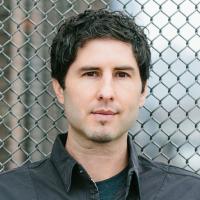Award-winning author Matt de la Peña talks about the many kinds of diversities that students need to see reflected in books, including students who are struggling in school or living in a group home.
This video appears in:
Transcript
I think we’re doing a really good job right now talking about just different diversities that need to be represented in bookstores, in school libraries.
But I think that the thing that we’re not getting as much of, is other diversities, what I call like unspoken diversities. So, for instance, not every kid is growing up with a mom and a dad. Right? Maybe some kids have alternative families. Not every kid is going to school every day and getting a 3.0 and sort of thinking about the parties at the end of the week. Some kids are really, really struggling in school; some kids are failing out. Some kids are going to school and then coming home to a group home.
So, I think it’s very important to share different journeys. And it’s not just important for a reader who might be going through a similar journey; I think it’s really important for us to ultimately read about kids who are growing up different than us. So we can have more empathy. This is the ultimate opportunity for empathy, is watching a kid in a book living a different life.
And maybe you’re going to understand it better than if you just hear a quick story about, oh, so-and-so lives in a group home. Then you start to form all these ideas about what that means, snap judgments. But if you watch a kid growing up in a group home through a 300-page book, you’re going to see all the nuance that you can’t see when you just hear a quick quip of about that kid.
But I also just think by nature when kids are young, they are looking for extremes. Right? I think they’re experimenting with the worst thing that could happen, or the fairy tale ending. You know, they want extremes because they live what they consider to be mundane lives. But why do they think it’s mundane? Because this is their existence every single day and you often think your story isn’t worthwhile, or it’s too boring, nobody would make a movie about my life, or write a book about me, because I’m just so ordinary.
Well, when you see it in a book though you can actually see your life as extraordinary because it’s actually been published, it’s in the school library, and that adds an instant validation to that story. If there’s something you’re ashamed of, there’s a little less shame if you find a book and it’s been published and it’s even maybe in the curriculum, or you see a friend reading your story. So that feels reinforcing and it chips away at that shame.
I think it’s important for us to have stories for, particularly middle school kids and high school kids, that are on the extreme. Sometimes that scary story can actually make a kid feel safe and at home. Sometimes a story about a kid who might be a quote/unquote “messed up” lets a kid who views themselves as a mess up, sort of watch somebody else go through an experience and maybe they’ll have a better – just a better idea of how to navigate it for themselves.
In a strange way, reading about stories like this give you reps on life and you kind of get to go through the process where the stakes are low because you’re just reading a book. And then when it comes to your real life, maybe you have something that you can pull from watching a journey like that, that you can use in real life.
